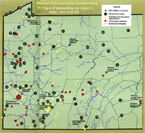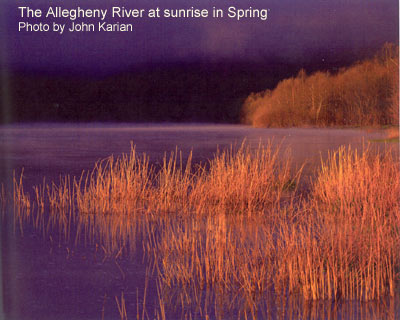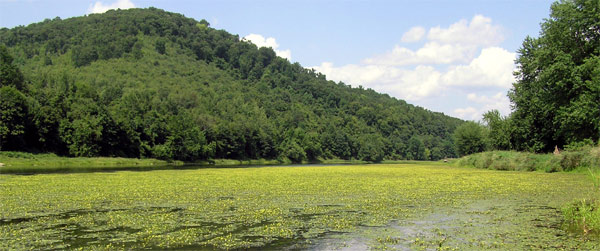|
Conserve |
|
| Conserve 75th Anniversary Commemorative Issue |
| 1930s - 40s |
| 1950s |
| 1960s |
| 1970s |
| 1980s |
| 1990s |
| 2000s |
| Fall 2007 Home |
| Past Issues |

Protecting the Allegheny River
By Charles Bier
The 325-mile long Allegheny begins as a trickle from a spring on a hillside in Potter County, Pa. As it gathers its upper tributaries and flows northwest into New York, the Allegheny is essentially just a big creek. But it's the middle section below Warren, Pennsylvania, where the river begins to exhibit its true
character and significance as one of North America's important riverine ecosystems.
Back in the 1960s, when the Western Pennsylvania Conservancy first identified the Allegheny River as a conservation focus area, no one imagined the global significance of the work the organization was about to undertake. The 127-mile stretch of the free-flowing Allegheny between Kinzua and Brady's Bend (Clarion
County) includes a rich array of habitats, including shallow gravel riffles, deeper swift cobble/boulder runs, eddy pools that conversely require effort for the paddler, all punctuated with a wealth of islands and populations of some of the world's rarest freshwater species.
Today, the Allegheny River is rightly recognized as a national treasure and
critical habitat. And just as it did more than 40 years ago, WPC continues its
objective to maintain the high quality of this important ecosystem.
 Our work has not been limited to the middle Allegheny River, but includes the lower 72-miles that pass downstream past Pittsburgh and onto the rest of the Ohio River basin. The goal in the lower river valley is to maintain and restore reaches of the best habitat as the Allegheny continues its role as a "working river," especially for navigation.
Our work has not been limited to the middle Allegheny River, but includes the lower 72-miles that pass downstream past Pittsburgh and onto the rest of the Ohio River basin. The goal in the lower river valley is to maintain and restore reaches of the best habitat as the Allegheny continues its role as a "working river," especially for navigation.
WPC has protected 22 river islands totaling more than 500 acres. Several of these islands are now part of the Allegheny River Islands Wilderness, a component of Allegheny National Forest. Additionally, the Conservancy has protected 19,500 acres of shoreline, floodplain, valley slope and tributary watersheds.
Situated further away from the river, but still contributing to the overall conservation impact, are 10,800 more acres of lands protected by WPC. WPC's conservation work on the Clarion River (11,600 acres protected), a major Allegheny tributary, will also help to insure the quality of the larger river into the future.
To help people explore and keep in touch with this great river, WPC has acquired the sites of two boat launches, including the launch at River Mile 12, Harmar, Allegheny County and a launch near Franklin, Pa.
Charles Bier is WPC's Senior Director-Conservation Science and provides conservation planning and scientific support across the organization. He has a broad background in ecology and biodiversity conservation issues and has been with WPC for 26 years.

